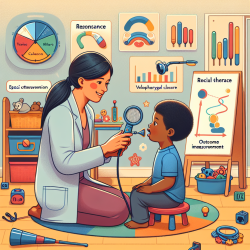Introduction
In the evolving landscape of education, the integration of technology has become indispensable. As professionals in speech-language pathology, we are tasked with not only adapting to these changes but also leveraging them to improve outcomes for the children we serve. The research article "Online lectures in undergraduate medical education: how can we do better?" provides valuable insights into the effective design of online educational materials. By applying these principles to online therapy, we can create engaging and effective learning experiences for children.
The Power of Multimedia Design
The research highlights the importance of multimedia design principles, as outlined by educational psychologist Richard Mayer. These principles, when applied correctly, can significantly enhance the retention and transfer of knowledge. Here are some key principles that can be integrated into online therapy sessions:
- Coherence: Eliminate extraneous content to focus on essential information.
- Pre-Training: Ensure that children have a foundational understanding of key concepts before introducing new material.
- Spatial and Temporal Contiguity: Present related words and images together, both spatially and temporally, to reinforce learning.
- Signaling: Highlight important information to guide attention.
- Redundancy: Use narration alongside visuals without overloading with on-screen text.
- Personalization: Adopt a conversational style to make the content more relatable and engaging.
- Segmenting: Break down information into manageable segments that children can process at their own pace.
Applying Principles to Online Therapy
For practitioners providing online therapy, these principles can be transformative. By designing sessions that are not only informative but also engaging, we can enhance the learning experience for children. Here are some practical steps to implement these principles:
- Use clear and concise language, avoiding unnecessary jargon or complexity.
- Incorporate interactive elements, such as quizzes or games, to reinforce learning and maintain engagement.
- Provide visual aids that complement the verbal instructions, ensuring they are well-aligned and supportive of the learning objectives.
- Encourage feedback and questions from children to foster an interactive and dynamic learning environment.
Encouraging Further Research
While the principles outlined provide a solid foundation, ongoing research is essential to continually refine and improve online therapy practices. Practitioners are encouraged to explore further studies and contribute to the growing body of knowledge in this field. By staying informed and proactive, we can ensure that our methods remain effective and evidence-based.
Conclusion
Incorporating evidence-based multimedia design principles into online therapy sessions can significantly enhance the educational experience for children. By focusing on clear, engaging, and interactive content, practitioners can create impactful learning environments that foster growth and development. To delve deeper into the research and explore additional strategies, I invite you to read the original research paper, Online lectures in undergraduate medical education: how can we do better?










